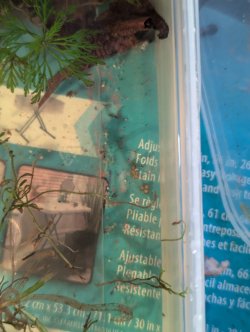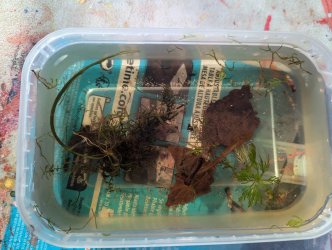For corydoras, a separate solid container is best with an airstone.
A fine layer of sand from the parent tank is also beneficial as it increases their survival rate.
Mesh type breeder boxes don't tend to work great with most corydoras because the fry can be sucked through the mesh by hungry adult fish.
So for maximum chances, a solid container clipped to the side of the parent tank with some sand, an airstone, and some leaf litter is often all you'll need to hatch them.
Once they hatch, change out the water with the parent tank water every day. Once they're bigger, you can then move them to a different breeder box type setup, but for the first week or two, you want a small setup.
It's also easier for them to find food in a smaller spot than a larger setup and easier for them to swim to the surface for air when they're Itty bitty.
If they're osteogaster aenea, they can take freshly hatched baby brine shrimp after the 2nd or 3rd day after hatching (they don't need food until they absorb their yolk sac after 2-3 days from hatching). Or can use microworms. If you don't have either, you can super finely grind up the adult food. Use a wet toothpick to dip into the powdered food and then dunk it into the baby water.
Here's a video of a diy heated brooder setup I did, but it covers some of the care you would be looking at for the first week with corydoras fry
A fine layer of sand from the parent tank is also beneficial as it increases their survival rate.
Mesh type breeder boxes don't tend to work great with most corydoras because the fry can be sucked through the mesh by hungry adult fish.
So for maximum chances, a solid container clipped to the side of the parent tank with some sand, an airstone, and some leaf litter is often all you'll need to hatch them.
Once they hatch, change out the water with the parent tank water every day. Once they're bigger, you can then move them to a different breeder box type setup, but for the first week or two, you want a small setup.
It's also easier for them to find food in a smaller spot than a larger setup and easier for them to swim to the surface for air when they're Itty bitty.
If they're osteogaster aenea, they can take freshly hatched baby brine shrimp after the 2nd or 3rd day after hatching (they don't need food until they absorb their yolk sac after 2-3 days from hatching). Or can use microworms. If you don't have either, you can super finely grind up the adult food. Use a wet toothpick to dip into the powdered food and then dunk it into the baby water.
Here's a video of a diy heated brooder setup I did, but it covers some of the care you would be looking at for the first week with corydoras fry






